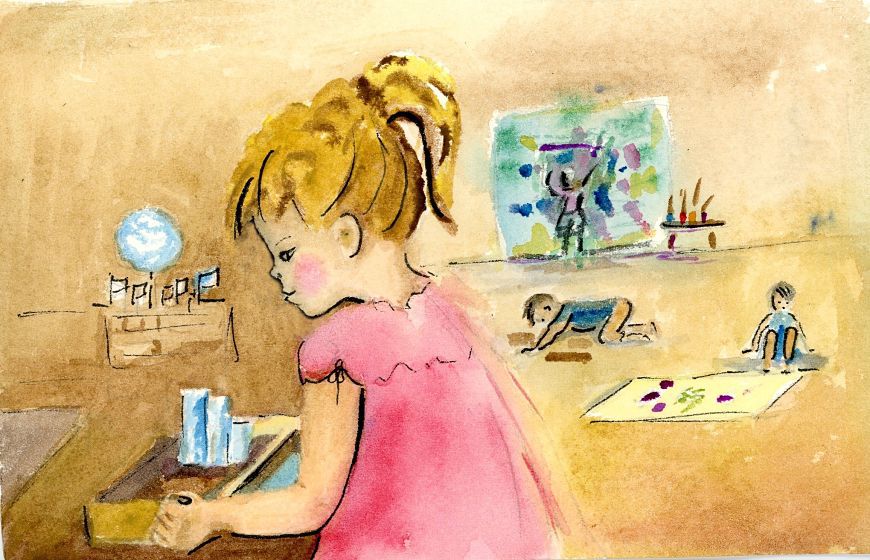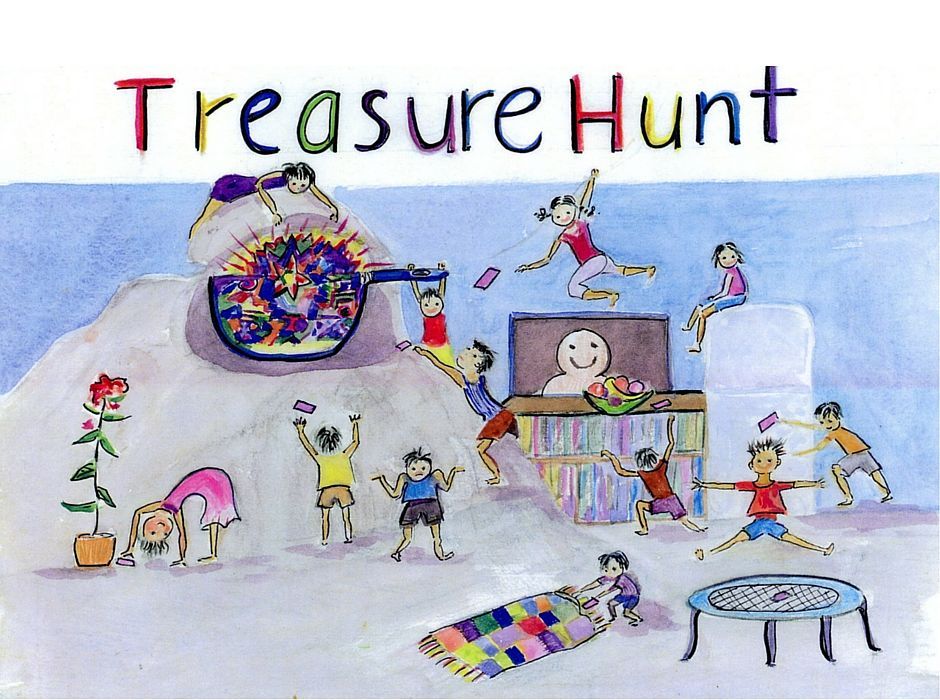Montessori – How Movement Helps Early Learning
by Dawn Hyde
A child learns easily when he utilizes movement in the development of his understanding.
The Treasure Hunt Game is explained below.
Children move around in the Montessori classroom in an orderly way in pursuit of their own goals. It is in stark contrast to the desk-locked traditional system that is still current today. The children sit at their desks as the teacher moves backwards and forwards supervising.
Including movement when presenting learning opportunities is not difficult, as it is the child’s preference. Children find movement irresistible yet so many schools arrest it.
One of the first ways to involve a toddler in helping and cooperating is to prompt him in a charming way to move his whole body.
- Can you find …?
- Where does this go?
- Could you put this in the bin, or on your bed, or on the kitchen bench?
- Can you bring me……?

These are the initial lessons for toddlers. This helps with orientation and with language development. This interaction establishes a cooperative atmosphere, and forms a happy relationship between adult and child.
There is a close connection between movement and the developing mind. Parents of young toddlers sometimes separate the two. They think that their child is doing either one thing or the other, and that an educational puzzle is more beneficial than climbing on the couch.
Montessori explained that the organization of three parts, the brain, senses and muscles lead to movement and coordination. Any activity that helps with coordination helps in overall development.
Movement is evident in Montessori exercises such as Transferring, Practical Life and Sensorial exercises, but when it comes to academic work, it is likely to be more sedentary. However, there are ways to change this up.
For example when we sit with the child to match cards he is reaching across and moving to find the matching card. This exercise can then be extended to matching at a distance. This is where the child moves across the room to find a matching card or an object.
The development of language must be attached to the power of movement. You can use movement to help a child understand language in its visual form. For example, tracing sandpaper or tactile letters with his fingers aids the child’s memory of the shape of the letters.
In Language lesssons when we have cards with an alphabet letter written on them, we can help them understand by asking –
- Can you put “a” behind your back?
- Can you hold ”b” in the air?
Simply adding the action aids memory.
In most schools children sit to do their work and then go outdoors for exercise. This is separating movement and mental work. Montessori found it beneficial to combine the two, offering freedom of movement and allowing the child to respond to his own ideas.
In Montessori classrooms we take advantage of the child’s urge to move and provide many opportunities for movement during the work period. In response there is the busy hum of the pupils rolling up mats, carrying trays, returning puzzle pieces, emptying jugs, hanging up towels etc. They move happily, using their mental and physical capabilities and their senses completing the task.

Υou can invent many games that incorporate movement, such as “What’s Missing”, “The Labeling Game” and one that I created for my grandchildren which they love – “Treasure Hunt”.
The Treasure Hunt Game
This game can start at 2½ years using a “clue card” with pictures instead of words. When the child is able to recognise some letters you can write one word on an index card with the picture.
When he can sound out 3-letter words, the cards should have simple phonetic words to start with.
Get the game ready ahead of time by hiding the clues for your child to find.
Put the cards in place and put a treasure in a tin which he finds at the end of the game.
Preparation – before the game –
- Place the card with the word “bed” under the mat.
- The card with the word ”deck” goes on the bed.
- Put the card with the word “cup” on the deck.
- The card with the word “hat” goes on the cup.
- The card with the word “tin” is placed in the hat.
- Say: “I am going to give you a clue card and it tells you where to go to find the next clue and if you follow the hunt you will find your way to the treasure.”
Procedure –
- Give the child the starter clue “mat”.
- Tell him “This is a clue to where to find the next clue”.
- Under the mat is another clue “bed”.
- On the bed is the next clue “deck”.
- On the deck is the next clue ”cup”.
- In the cup is the next clue “hat’.
- In the hat is the next clue “tin”.
- The tin holds the treasure and it can be hidden somewhere close by.
When we get to this point we can give verbal clues about where the treasure tin is hiding. For example, “You are getting warmer or colder”.
The Treasure Hunt game can be played outdoors, using clues such as tap, plant pot, rock, step, tub, swing, cubby, sand pit, etc.
Suggestions for Treasure – balloon, stickers, toy car, favourite cookie, funny joke, a trinket.
You know your child best. You can wrap a simple surprise in gift-wrapping, or you could skip the surprise and feel good about following all the clues to the treasure.
The purpose of this game is to offer a reason to write and to read. Once children catch on to this, it motivates them to want to write and this is the springboard to reading.
